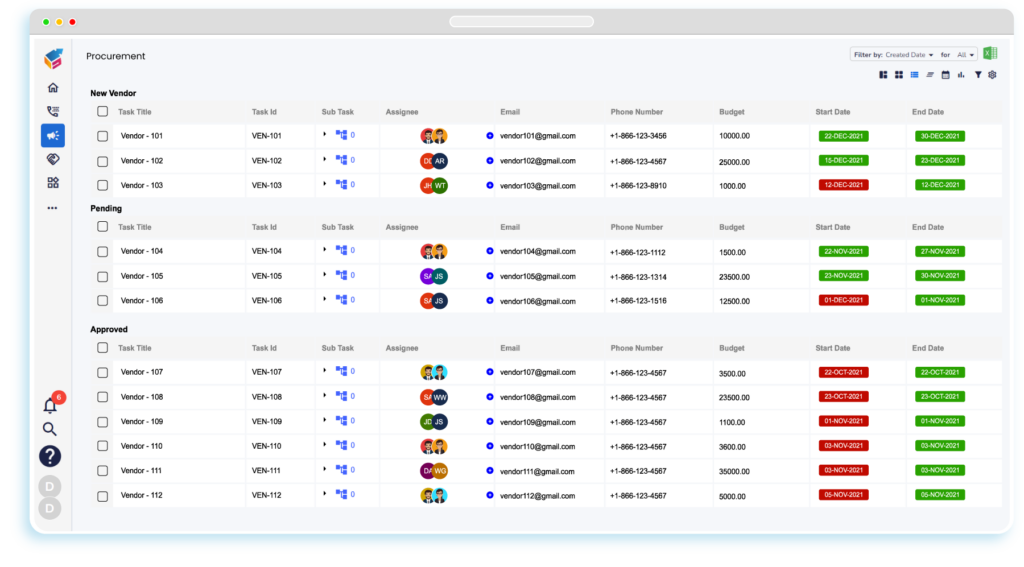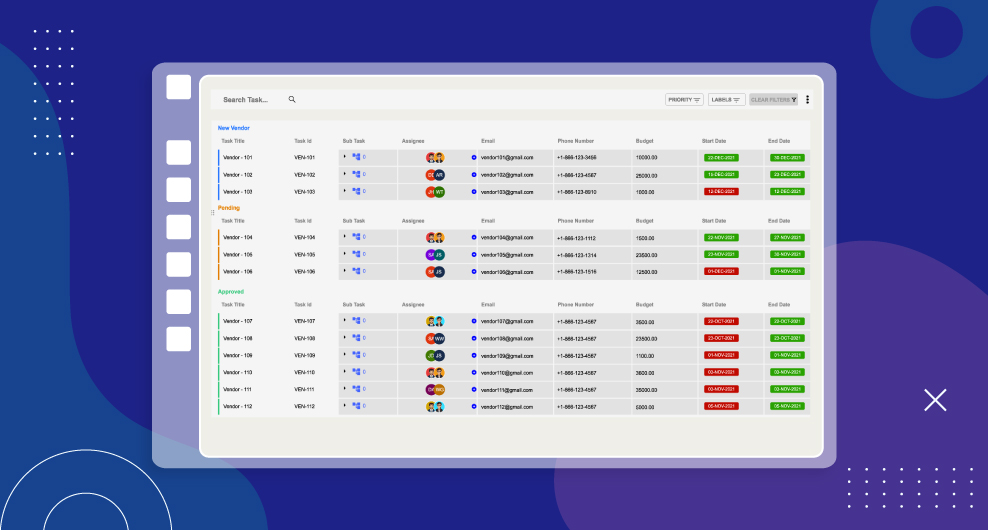Table of Contents
Sourcing and procurement are related to the same process but are different. Understanding the difference between these two terms helps the organization to make better workflows to enhance procurement efficiency.
This article elaborates on what sourcing is, what procurement is, the procurement process, the difference between sourcing and procurement, and the benefits of using procurement software.
What is sourcing?
Sourcing is a process of identifying suppliers for purchasing goods or services required for daily activities. It is the first step of the supply chain. It involves various steps like identifying many suppliers, understanding market needs, strategizing suppliers, calculating budget and volume, negotiating, and confirming orders.
Sourcing is an essential part of the procurement process that focuses on buying high-quality products with a low budget. It is responsible for reducing the financial risks in the procurement process. The key part of sourcing is negotiating. It aims to negotiate with suppliers to reduce costs to the maximum while maintaining quality.
What is procurement?
Procurement is the end-to-end process of sourcing and purchasing goods or services for ongoing operations. Sourcing is a part of procurement. Procurement involves sourcing, negotiation, paying, verifying goods, and maintaining records. This process will vary based on the company’s regulations.
The basic steps followed in procurement are identifying requirements, making purchase orders, sending purchase orders for approval, placing the order once approved, verifying quality and quantities once items are received, and maintaining records. This may vary based on the workflow of each organization.
In the digital world, e-sourcing vs. e-procurement offers more benefits than strategic sourcing vs. procurement. Businesses use procurement software to enhance supply chain management. Yoroflow, a workflow management tool, provides a streamlined workflow for procurement management. This process automation enhances procurement efficiency and reduces the cost and time spent on procurement and vendor management.
Procurement process
The procurement process involves various steps such as:
- Identifying requirements: The first step in the procurement process is analyzing and identifying the requirements. It is important to finalize what is required in what quantities. The product and the quantities need to be finalized before starting the procurement process.
- Vendor selection: Once the requirements are gathered, the next step is finalizing the supplier or vendors. This step involves identifying the best suppliers who provide the products with the best quality, cost, and time.
- Negotiation: Negotiations include various terms and conditions that both sides should accept like price, delivery date, quantity, and quality.
- Preparing purchase orders: Preparing purchase orders is very important and should be understood by the vendors. It should include item description, price, quantities, and other expectations.
- Order approval: After creating purchase orders, it should be sent to the finance or procurement department for approval. If it is approved, then it will go to the next process. If it is rejected, then again it should go for the previous process.
- Inspecting goods: Once goods are received, the team should check the items received with the receipt. Here the quality and quantity of the items are to be verified.
- Invoice processing: After verifying the product with the invoice, it is forwarded to the finance department for payment. Once all the verification is done, invoice payment is processed successfully.
- Maintaining records: The procurement team should maintain records of purchase orders, invoice details, and vendor details for further approaches. This will help the team to maintain a good relationship with the vendor.
Differences between sourcing and procurement
Sourcing | Procurement |
|---|---|
It involves identifying, analyzing, and negotiating with suppliers. | It is an end-to-end process that includes sourcing, managing workflows, paying, and receiving goods. |
Purchasing goods or services that are required for day-to-day activities. | Purchasing goods or services that are required for ongoing operations. |
It focuses on buying the best quality at a low budget. | It focuses on what and whom to buy the required products. |
It can deal with global suppliers. | It can deal with local suppliers. |
The process goes on until negotiate the best price. | The process goes until purchasing the products that can be used by end customers. |
Benefits of using procurement software
- It automates the repetitive tasks in the procurement process to enhance the speed.
- It provides consistency and is a cost-effective process.
- It analyzes requirements, market trends, vendor details, and pricing. This provides insight which helps to make better decisions.
- Reduces human errors and bottleneck corrections while placing purchase orders.
- It helps to maintain smooth relationships with the vendor by avoiding last-minute cancellations.
- It provides various in-built templates like inventory management template and purchase order forms.

- It provides various features like vendor database management, better collaboration, transactional features like procure-to-pay, and security checks.
Get your automated procurement process
By implementing the best strategies in the procurement process, organizations can reduce risks, cost-effective procurement, and enhance efficiency. Yoroflow provides pre-defined templates for streamlining the procurement process. As it is a no-code platform, it provides a graphical interface for creating and managing workflow. By leveraging its features, organizations can enhance their procurement process by reducing costs, risks, and time spent on these processes.




